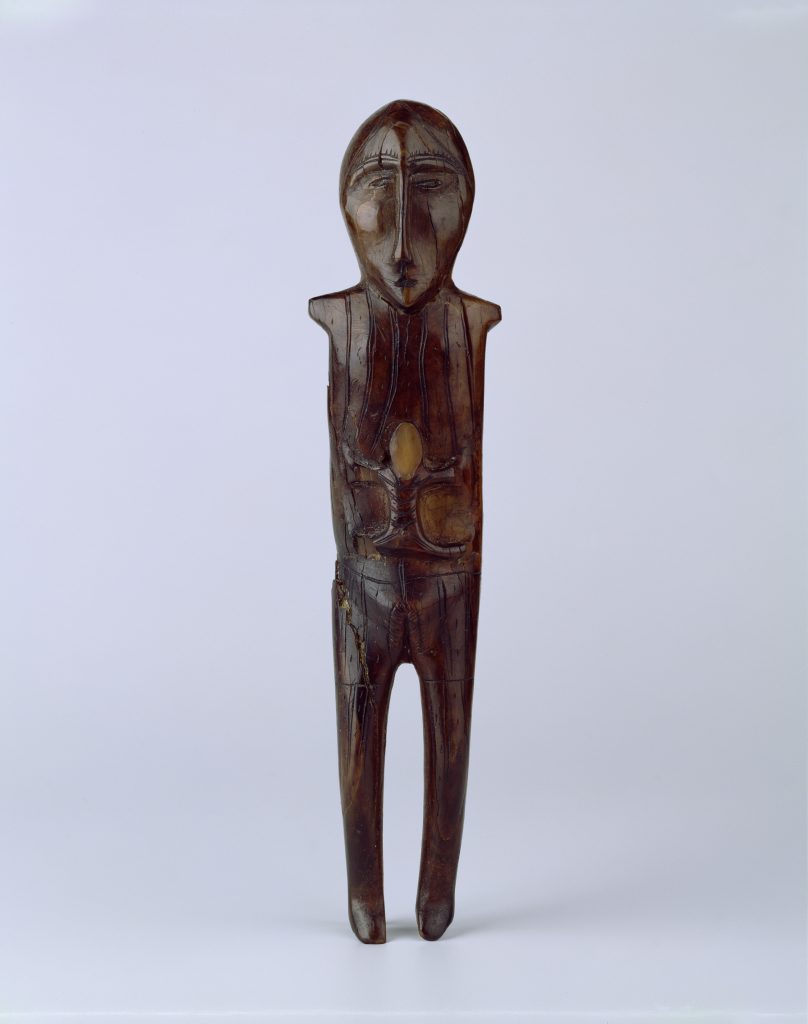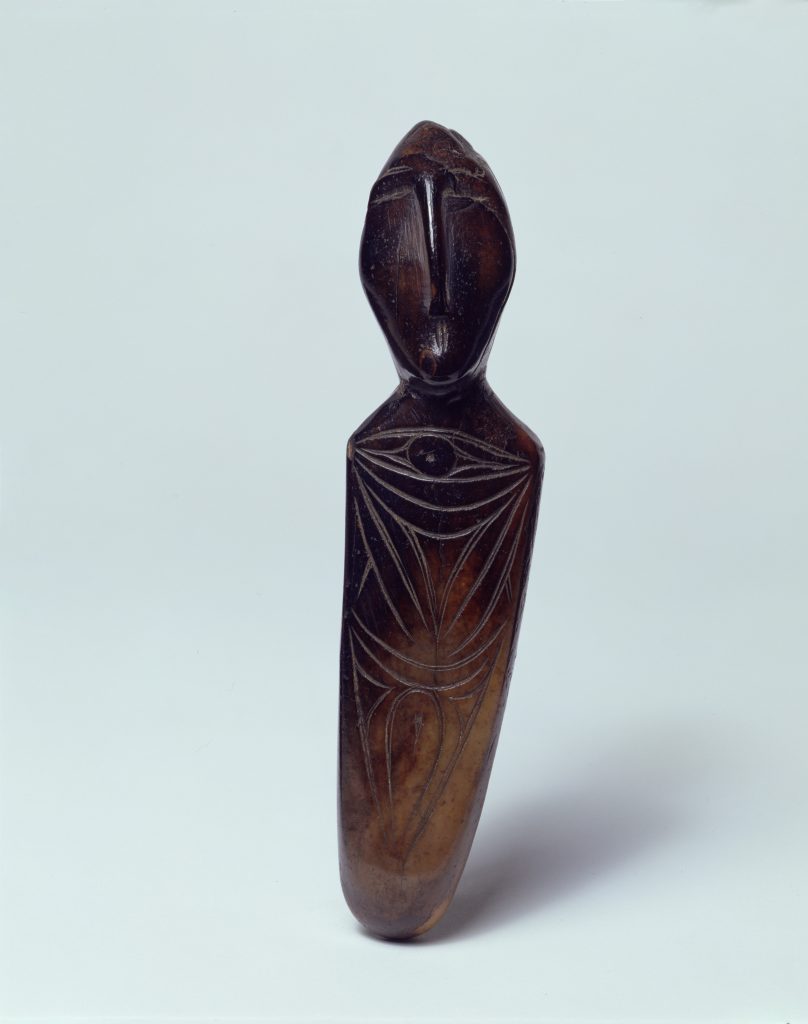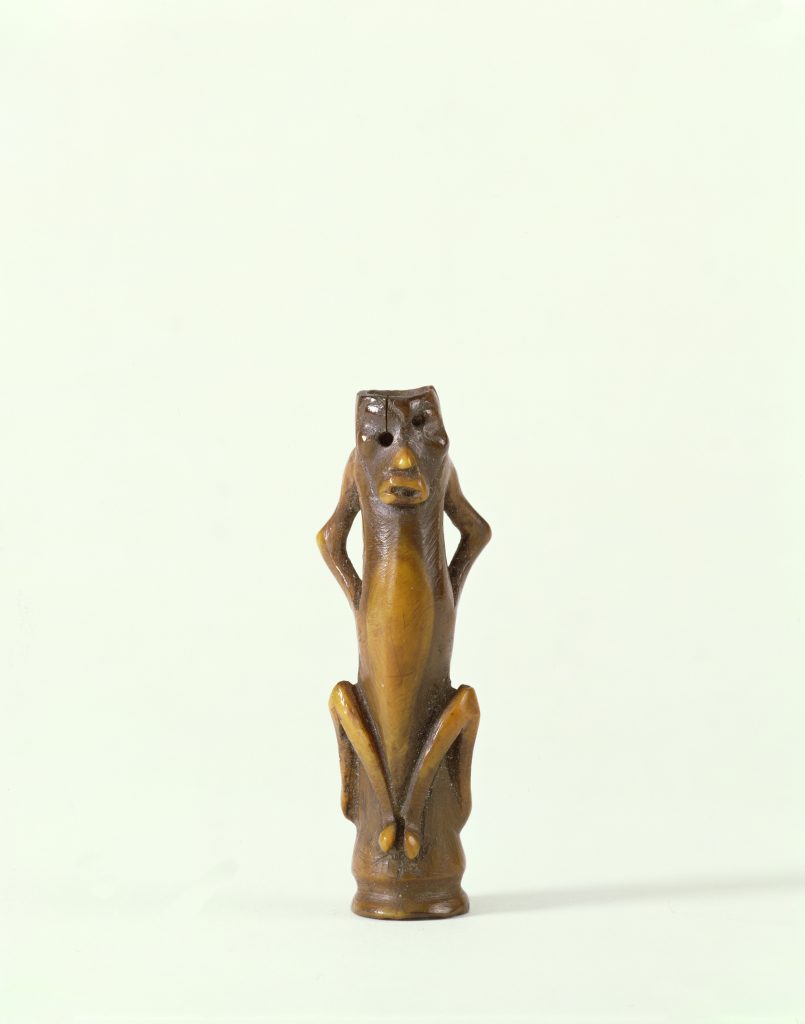Five remarkable objects from the Sainsbury Centre’s collection are at the heart of a new exhibition at the British Museum that reveals how communities in the world’s most northern areas have dealt with shifts in their climate with resilience, creativity and collaboration. Arctic: culture and climate reveals the rich cultures that have emerged across the circumpolar region over the past 30,000 years, featuring artefacts ranging from jewellery and fur clothing to stone monuments and contemporary photography. The Centre’s loans, curator Amber Lincoln explains, epitomise the relationship between humans and nature that has long been at the heart of Arctic life. Filled with stories of adaptation and connection to animals, they offer an unparalleled and vital insight into the work of civilisations currently at risk of being washed away.
In from the Cold: Five Sainsbury Centre Treasures at the British Museum
Objects from the Centre’s collection offer snapshots of life in the Arctic
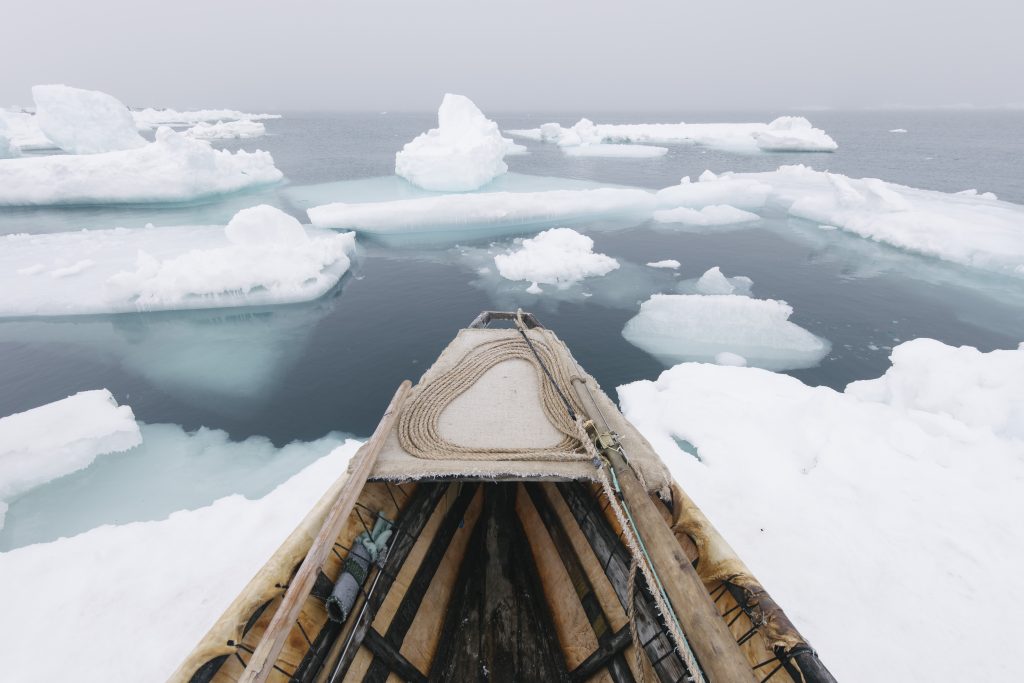
Kiliii Yuyan, Umiaq and north wind during spring whaling, 2019. © Kiliii Yuyan
These two objects are “spectacular examples of the Old Bering Sea tradition”, Lincoln says, in which walrus ivory was carved into figures often resembling women. Both are covered in engravings which, in their skeletal and eye-shaped motifs, could suggest a connection to shamanism – but they could also be tattoos, common at the time. Lincoln also sees the figure carved onto the chest of the woman in the latter work as potentially being something other than a child. “I see a little bear with the human figurine. Has she given birth to it? Is she caring for and nurturing this animal? What’s happening here?”
What these objects certainly represent, however, is a critical moment in Arctic history in which an increase in nutrients caused by a changing climate made the Bering Strait an “incredibly productive environment for marine mammals” and in turn marine mammal hunting. This was transformative for people living in these regions, who developed more sedentary lifestyles as they built villages around “walrus haul-outs, where the walrus all come out of the water to give birth or to mate”. An abundance of materials for walrus ivory led to greater trade, wealth and even a class system: these two sculptures, created nearly 2,000 years ago, represent that turning point.
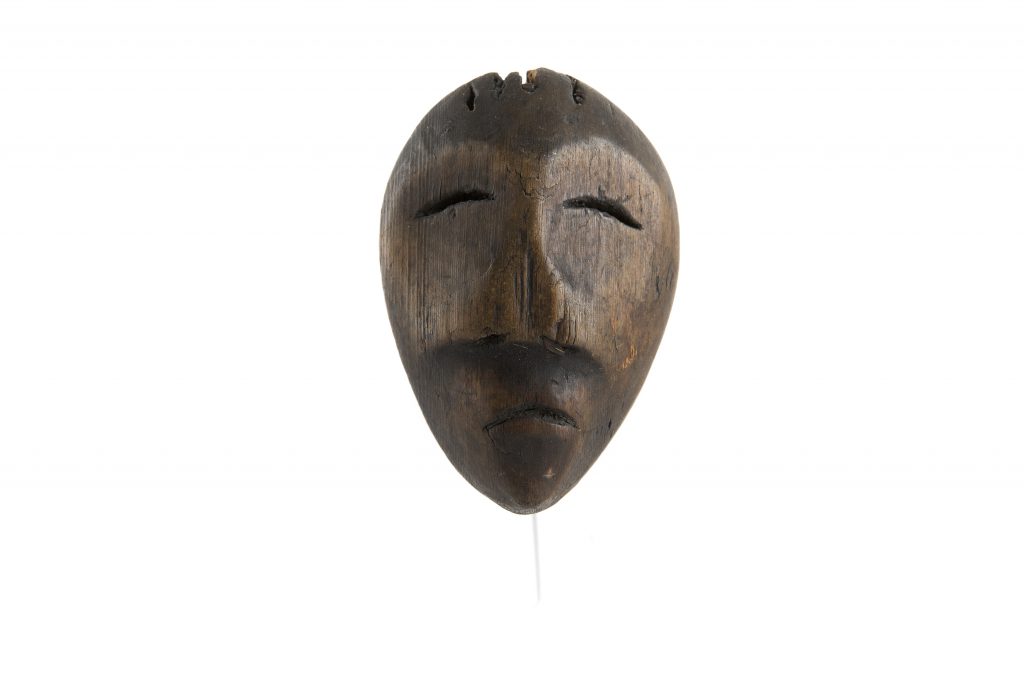
Around 700 years after the Old Bering Sea cultures that produced the aforementioned female figures, a Thule culture emerged that “took the Arctic by storm”, explains Lincoln. With the help of new technologies such as sealskin floats, this community was the first in the Arctic to begin whaling on a large scale. It was a development reflected closely in their material culture – including this astonishing maskette, whose eyebrow and nose “depict a whale’s tail”, Lincoln says. This is an artistic tradition that continues in Point Hope today, and one that derives from the region’s origin story, which tells of a giant harpooned whale that became the land upon which people lived. “Their entire existence is the result of the sacrifice of an animal,” Lincoln explains. The maskette, therefore, is “a material embodiment of people’s understanding of their place in the world”.
Allowing for the creation of tailored clothing suitable for extreme conditions, the needle and the needle case were “the most important technology in the Arctic, full stop”, Lincoln explains. This value was reflected in the effort makers, especially within the Inuit community, put into their design, with intricately carved cases created to provide adequate storage for delicate bone needles.
The Sainsbury Centre’s case takes the form of a figure with a human face and caribou legs, a merging of human and animal that Lincoln explains is open for interpretation. There are, however, practices that may have relevance: “[The indigenous groups] Yup’ik and Inupiaq have traditions of mask-dancing,” Lincoln explains, “and one mask dance that Yup’ik participated in, and in some cases still do, is where you would design a mask that looked like somebody and kind of make fun of that. I always wondered, because the eyes are a little bit mismatched and it’s kind of an odd-shaped face, if this object had anything to do with that.”
There are also, she continues, Yup’ik stories of western Alaska from very long ago, “when people and animals could speak to each other much more easily”. In these stories, animals would lift their “hood”, which was their animal face, and reveal a human face underneath. “These are guesses,” she adds, “but it’s what this object makes me think of.”
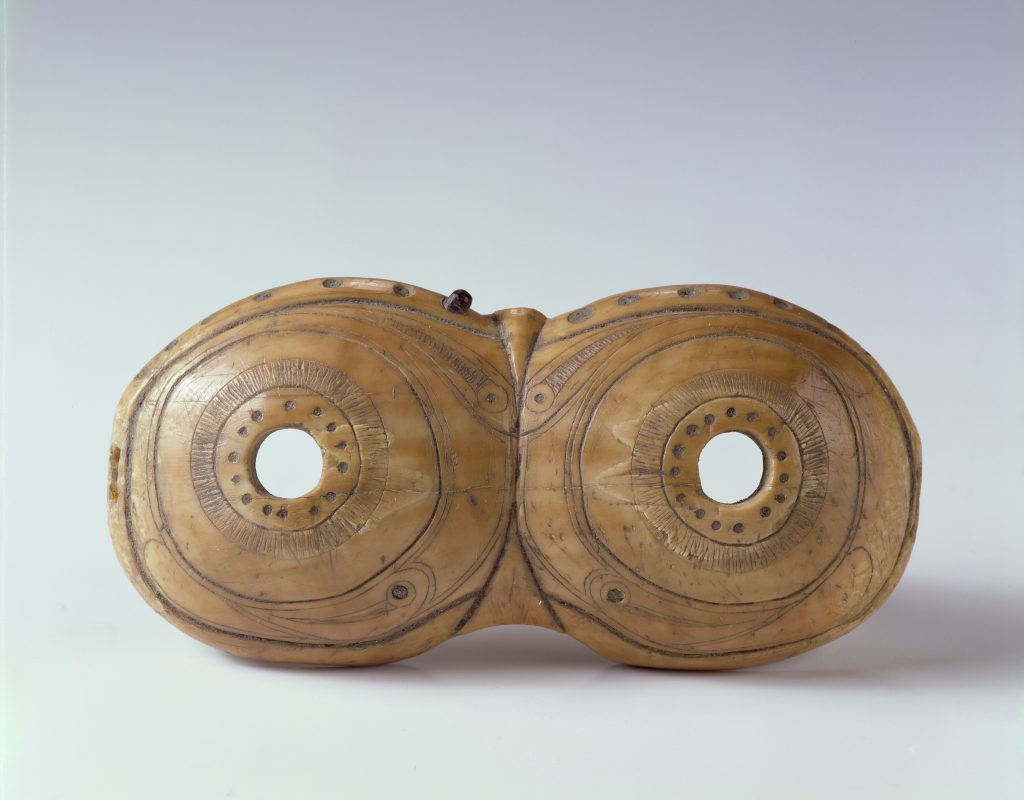
Masks such as this, while suggestive of practical use, had rich symbolic value within Ipiutak communities, Lincoln says. Many were placed on the dead, specifically shamans and “people of high clout”, in what was an emerging form of inequality in society where “people in certain graves were covered in a plethora of expensive tools and well-decorated objects”. Present here too are shapes that connote animals – specifically owls, which Lincoln places in the context of Ipiutak culture and its interest in human-to-animal shapeshifting. “You’re actually seeing the transformation in the carving itself,” she says. “Throughout the Arctic and in particular in these objects, the emphasis is on animals and the relationship they have with people.”
Arctic: culture and climate has now reopened at the British Museum on 3 December and runs through 21 February 2021. The loans discussed in this article, meanwhile, are just a small proportion of the Sainsbury Centre’s rich holdings of Arctic objects. Come face-to-face with more treasures with a visit to the Centre when it reopens, or explore online collections here.
